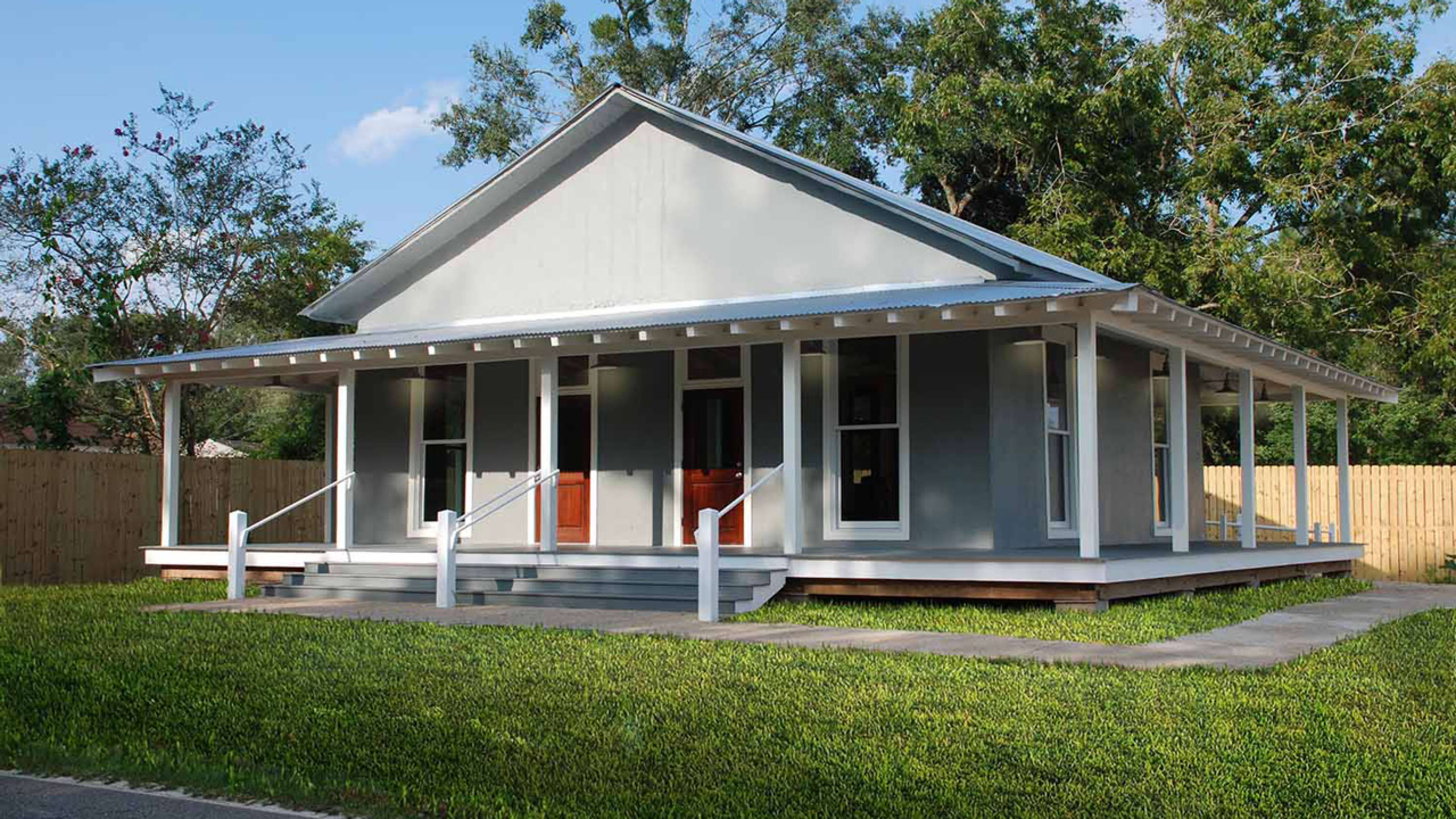When Derrick Evans paid $10,000 for a dilapidated, sinking house in Turkey Creek, Mississippi, he thought it was a modestly affordable way to help stop some of the loss in his hometown. A historically Black settlement founded in 1866 by formerly enslaved people, Turkey Creek had slowly seen its heritage watered down—by annexation into the nearby city of Gulfport, by redevelopment, and by the actual rising water and hurricanes of the Gulf Coast. For Evans, a history teacher who had left Mississippi to teach in Boston, the 2004 purchase was a small way to fight back. He didn’t realize it would set him on a two-decade crusade to preserve the architectural heritage of his community.
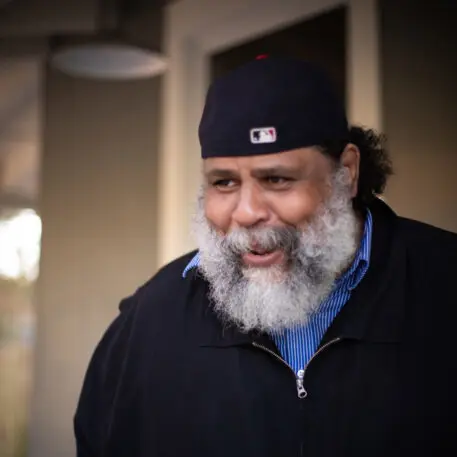
It’s a campaign that now has a centerpiece: The house Evans bought back in 2004 has been renovated and preserved as a community history center and museum for Turkey Creek. The single-story square building, which had sunk a full foot into the soggy ground, was falling to pieces inside after being vacant for several years. Restored in conjunction with Mississippi-based firm Unabridged Architecture, the building has become a rallying point for the further preservation of the community.
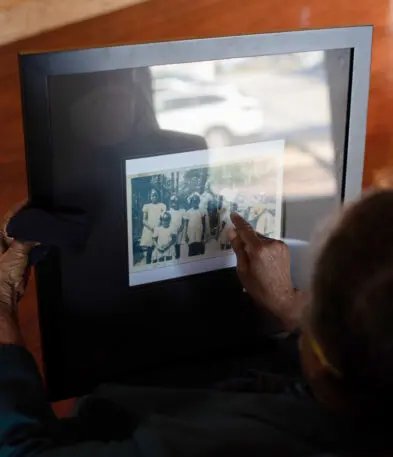
Evans started this preservation campaign after a disturbing visit home in 2001. The community’s historic cemetery, which held the remains of generations of Black residents, including formerly enslaved founders of the community, was being bulldozed to make way for an apartment building. It was just the latest encroachment of development since the community had been annexed by predominantly white Gulfport in 1994. Evans, a trained historian, was dismayed at the cemetery’s destruction. “Who does this? And worse, who sits here and watches it happen?” he says. “It takes two to make a thing go wrong sometimes.”
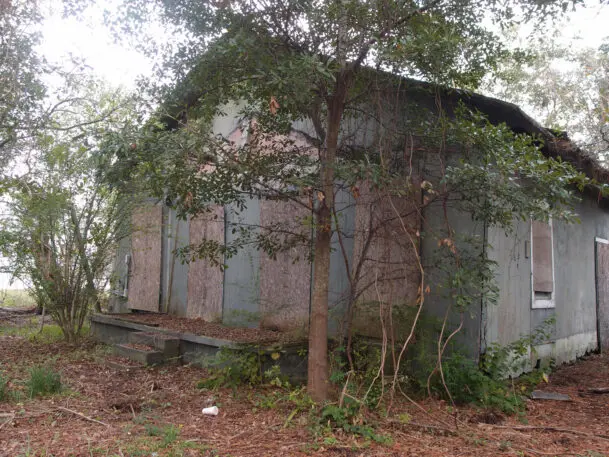
So Evans decided to start making things go right. He moved back full time in 2003, around the time he bought the old house. He now owns several buildings and properties in Turkey Creek. “I’ve been on mission creep,” he says.
It all ties back to the dilapidated house Evans bought for $10,000. He learned after buying it that this was no ordinary house. In the early 1900s, it was actually an office building for a naval stores plant, where local pine stumps were boiled in gasoline and turned into utility poles, railroad ties, and boat building materials. The building Evans bought was the plant paymaster’s office, built in the 1920s, where the plant’s mostly Black workers would line up every day to get paid out in company scrip. It was a rare and early site of well-paying industrial jobs open to Black workers, and many of those employed by the plant built homes and raised families in predominantly Black Turkey Creek.
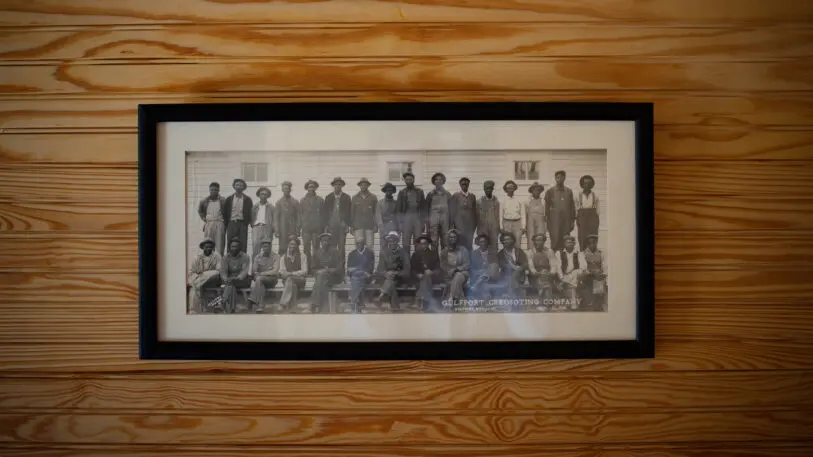
The building also had its own tragic history. In 1943, the naval stores plant exploded, killing 11 men, 9 of whom were Black workers. Part of the reason the paymaster’s office was still standing was its unique construction. The walls and ceilings were coated in a thin layer of cement plaster—an early form of fireproofing, according to the architects who led the restoration.
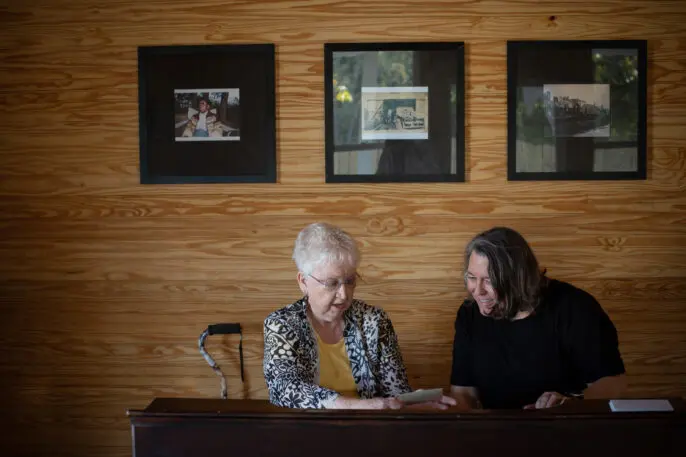
“This is a tiny little building in the middle of these giant plants boiling gasoline. But it was also the paymaster’s office. So the money was in there and the records were in there,” says John Anderson of Unabridged Architecture. “They had anticipated the danger.”
Evans saw an opportunity. Recognizing the significance of the paymaster’s office and several other historic buildings in the community, he launched an effort to have Turkey Creek listed on the National Register of Historic Places. After Hurricane Katrina devastated the region in 2005, the area began to receive more attention and preservation funding, including for the migratory bird stopover in Turkey Creek. “The whole region before Katrina was an undiscovered historical-cultural treasure trove that if you didn’t live there, you wouldn’t know,” Evans says.

Evans’s effort to preserve the buildings was almost squashed, just as an application was being submitted to the Department of the Interior. “In February 2007, I’ll never forget it, Black History Month, the city sends a code enforcement officer to condemn five buildings [including the paymaster’s office],” Evans says. “The city wanted it torn down for understandable reasons, but also the larger reason of one less thing in Turkey Creek to have to deal with.”
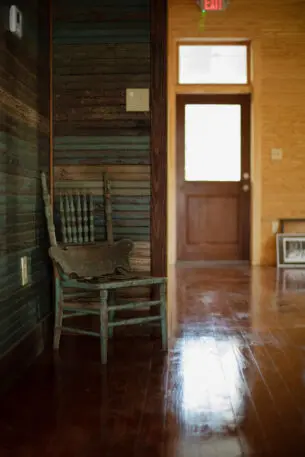
A last-minute volunteer effort led by Evans got the building up to code before the city could demolish it. The community was listed on the National Register later that year. And that’s when Evans’s preservation effort gathered some significant momentum. A documentary film was produced. The Daily Show visited and did a segment. The paymaster’s office qualified for historic preservation grants, and by 2015 it had been named one of the 10 most endangered places by the Mississippi Heritage Trust. Unabridged Architecture got involved to help its preservation, and the project eventually secured nearly $500,000 from the National Park Service’s Civil Rights grant fund.
Restoration of the paymaster’s office got going in earnest, and an architectural fact-finding mission was launched. “We had to go in there and document what was left, and also try to really track the story of the building,” Anderson says. “It was sort of a mystery at that point.”
Archival research uncovered an old photo of the naval stores plant, from before the 1943 explosion, which gave a better idea of what the building originally looked like and how it was used. “In the very corner of that photo was this building. We could see maybe 20% of it,” Anderson says.
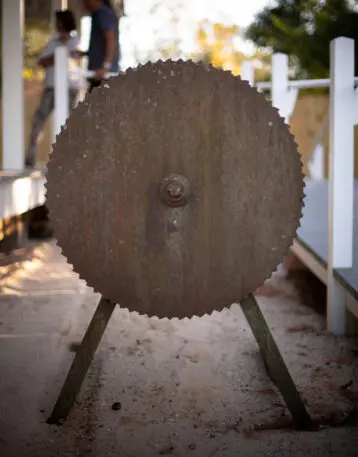
The architects could tell from the photo that the square building had at one point been moved and rotated 90 degrees. The paymaster’s window could be seen on one side. Another side had two doors a few feet apart. “I always thought that was the entrance. But it never really occurred to me until really reclaiming the space and imagining using it and having people come in and out that those are actually [separate] black and white entrances to a place of business,” Evans says. “Jim Crow was thoroughly operating.”
The restoration of the building has kept those two doors in place, and added a feature that had long since disappeared. In the archival photo, the architects could just make out what appeared to be a large porch. They ringed the building with a wide wraparound porch, turning a somewhat odd cement-covered cube into a welcoming space to find some shade and take in the sunset. The restoration also reused roughly 90% of the original building material. After delays due to the pandemic, the restoration was completed last summer.
“Getting funding from the outside, from the National Park Service’s Civil Rights branch, is really an acknowledgement of what this community stands for and what they have lost in the past 75 years,” says Allison Anderson of Unabridged Architecture. “It’s more than just restoring a building.”
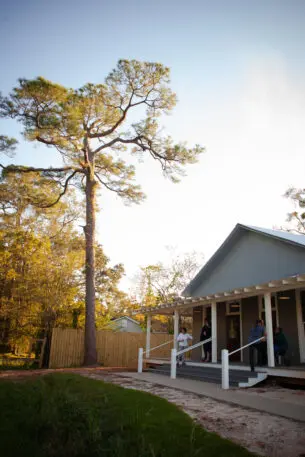
Evans has begun turning the interior into a modest historical center and archives, with documents and memorabilia from the community, the plant, and the region’s misunderstood industrial past.
“It’s not cotton plantations, but it’s pine trees and forests and plants, which explains the growth and development of the economy and the culture of where I’m from,” Evans says. “There wouldn’t even be these places on the Gulf Coast from Florida to Texas, especially inland north of the Gulf, if it wasn’t for the indigenous long needle [or longleaf] pine and the coastal streams and bayous by which they were conveyed to the coast.”
In addition to the historic items he has on display, Evans has also created an installation outside with 11 chairs facing the former plant site, representing the 11 men who died during the 1943 explosion. He’s hoping to expand the historical context further, making a connection out to nearby pine tree stands to re-create the scene of a preindustrial camp that laid the foundation for the region’s stint as a naval stores powerhouse.
None of this was in the original plan, to the extent that there was one, back in the early 2000s.
“I bought the building because it was old. I didn’t know the history even though I’m a historian. I knew I would get around to it,” Evans says. “I can tell you I’ve been blown away by learning piecemeal up to this very day more and more and more about this property and this larger history I’ve stumbled into.”
He’s hoping the new cultural history center will help bring more of Turkey Creek’s history to the surface. “Architecture, and frankly all planning and development,” he says, “either anchors or unmoors communities and people.”
Recognize your brand’s excellence by applying to this year’s Brands That Matter Awards before the early-rate deadline, May 3.
